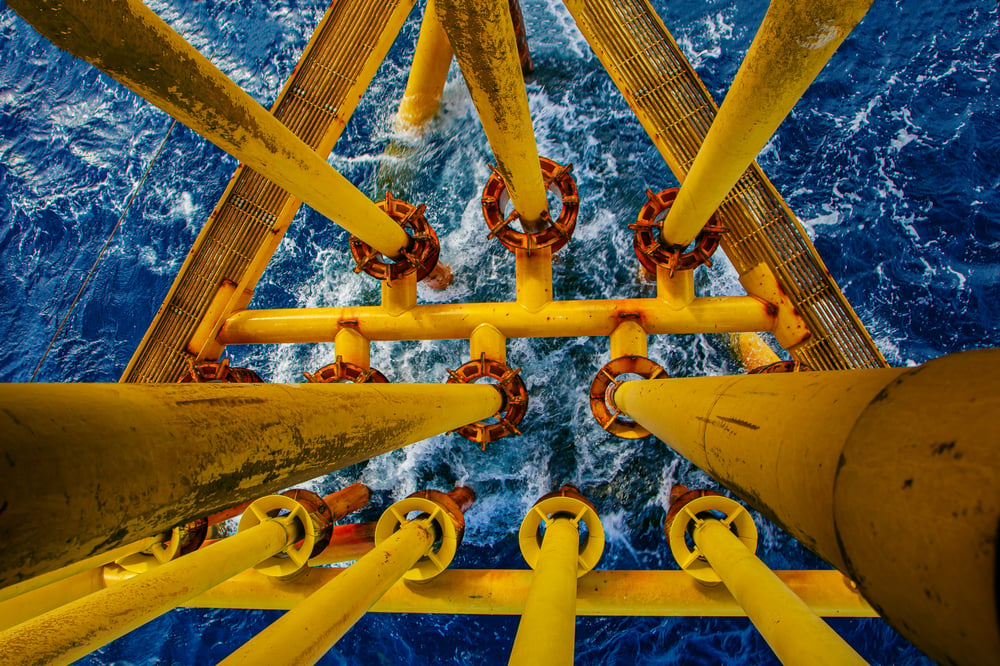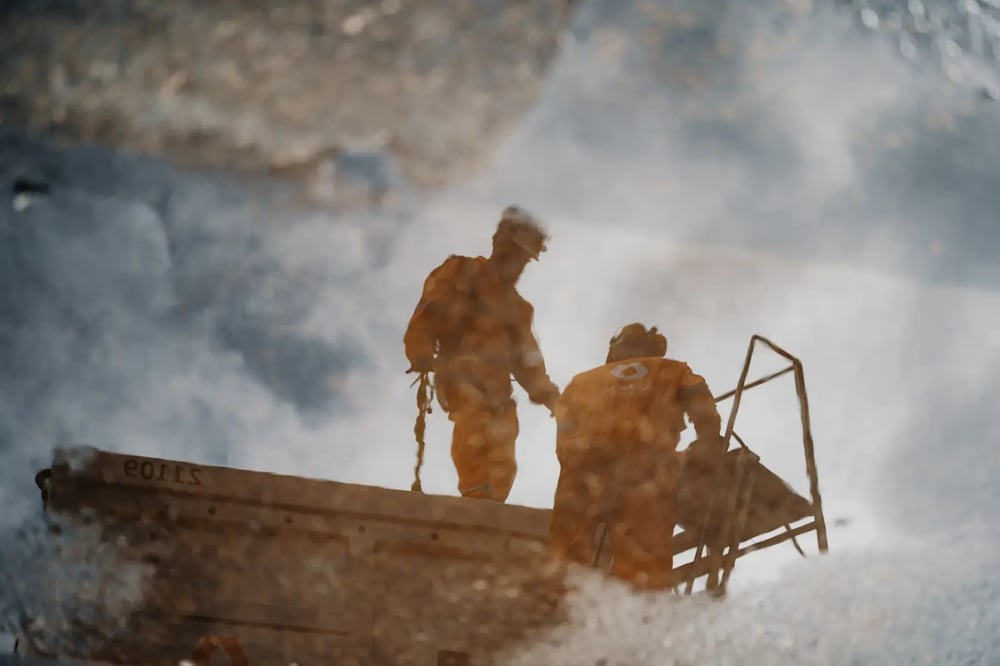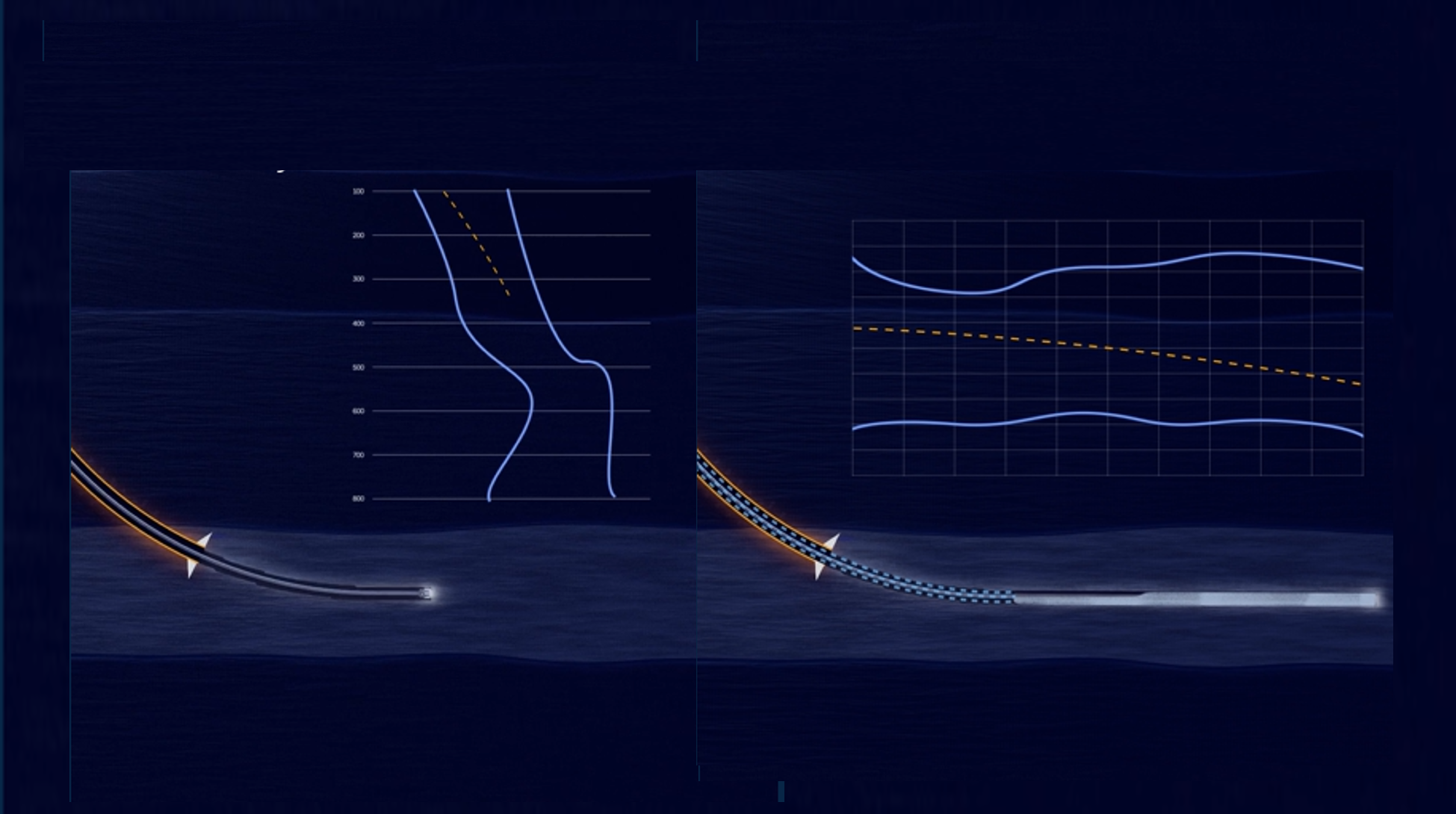11 Factors Affecting Kick And Loss Detection Accuracy
Ever wondered what keeps drilling operations safe and efficient amidst unexpected fluid movements?
This comprehensive guide reveals 11 key elements shaping precise detection accuracy.
After working internationally for a decade, he has returned to Norway moving from an operational role to focusing more on technical sales.
Sneak peak of what's ahead:
-
In-depth insights: Uncover the intricacies of kick and loss detection in drilling operations.
-
11 critical factors: Explore and understand the vital elements shaping detection accuracy.
-
Practical guidance: Practical solutions and strategies for safer and more efficient drilling practices.
Frequently Asked Questions
To help you get even more value from this guide, these FAQs highlight the questions we most often receive from drilling professionals. They provide quick clarifications on key points so you can apply the insights more effectively to your own operations.
Executive summary
This e-book delves into the critical aspects of kick & loss detection in drilling operations. It emphasizes the importance of precise kick
& loss detection, highlighting its role in ensuring personnel safety, environmental protection, operational efficiency, well integrity, and
regulatory compliance.
Subsequently, it presents the reader with an in-depth exploration of 11 factors influencing detection accuracy. It concludes by offering a
modern solution that can enhance detection accuracy through real-time monitoring, thus reducing non-productive time, minimizing the need for static flow checks, and improving overall well construction efficiency.
Before diving into the depths of 11 factors affecting kick & loss detection accuracy, it can be appropriate to define what is meant by a kick, a loss, and kick & loss detection accuracy.

WHAT IS A KICK
caused by the pressure in the wellbore being lower than the pressure in the surrounding rock formations.
Results
- Pressure Imbalance: A kick usually occurs when the hydrostaticpressure exerted by the drilling mud in the wellbore is insufficient to counterbalance the pressure of the fluids in the formation being drilled.
- Drilling Mud Role: Drilling mud is carefully engineered to exert a specific pressure in the wellbore to prevent fluid influx. If this balance is disturbed, it can lead to a kick.
Detection
- Indicators: Common signs of a kick include an unexpected increase in the return mud flow rate, changes in drilling mud properties, a rise in pit volume, or changes in wellbore pressures.
- Early Detection: Early detection of kicks is crucial to prevent escalation into a more dangerous situation, like a blowout (an uncontrolled release of formation fluids).
Types of formation fluids in a kick
- Gas: The most common and dangerous type of kick. Gas expands as it rises in the wellbore, increasing the risk of a blowout.
- Oil: While less dangerous than gas, an oil kick can still lead to well control problems.
- Water: Generally, the least hazardous, but can still lead to operational issues.
CONSEQUENSES
- Blowout: This is the most severe consequence of an uncontrolled kick. A blowout occurs when formation fluids (gas, oil, or water) enter the wellbore under pressure and are not controlled by the hydrostatic pressure of the drilling mud or the well's blowout preventers (BOPs). Blowouts can lead to fires and explosions, especially if the influx contains a significant amount of gas.
- Equipment Damage: The uncontrolled pressures and flows associated with a kick can cause significant damage to the drilling rig and downhole equipment. This includes damage to the drill string, the wellhead, and the blowout preventer.
- Environmental Pollution: If a kick escalates to a blowout, there is a risk of significant environmental damage due to the release of hydrocarbons into the environment. This can affect marine life in offshore drilling and wildlife, water sources, and soil in onshore drilling.
- Safety Hazards and Potential Loss of Life: The sudden and uncontrolled nature of a kick poses serious safety risks to the drilling crew. In extreme cases, such as blowouts with subsequent fires or explosions, there can be a tragic loss of life.
- Economic Loss: A kick can result in substantial economic losses due to interrupted drilling operations, the cost of repairing or replacing damaged equipment, and potential liabilities from environmental damage and injuries.
- Loss of the Well: In some cases, a kick can lead to losing a well, leading to the loss of investment.
- Reputational Damage: Companies that experience a blowout or a severe incident resulting from a kick can suffer reputational damage, impacting their future business prospects and relationships with regulators and the community.
- Loss of time: In drilling operations, encountering a kick can lead to a significant loss of time. Safety protocols, investigative processes, implementation of well control measures, regulatory compliance, re-establishing drilling, and project delays collectively contribute to this downtime.

What is a loss?
"Loss" refers to the situation where drilling fluids, commonly known as mud, are lost into the formation because the pressure in the well exceeds the fracture pressure of the formation.
This phenomenon, often termed as "lost circulation," is a significant challenge in drilling operations.
Causes
- Formation Characteristics: Lost circulation typically occurs when the drilling mud flows into fractures, highly permeable zones, or void spaces in the formation instead of returning up the wellbore.
- Pressure Imbalance: It can be initiated when the hydrostatic pressure of the mud exceeds the fracture gradient of the rock,
causing the rock to crack and accept the mud.
Types of losses
- Seepage Losses: Minor losses where mud slowly seeps into the formation.
- Partial Losses: More significant than seepage, where the mud flow rate into the formation is noticeable but not complete.
- Complete Losses: A severe situation where all the mud pumped
into the well is lost into the formation.
Detection of loss
- Indicators: Loss is often detected by a decrease in the mud return flow rate, a drop in mud pit levels, or a decrease in wellbore pressure.
- Monitoring Tools: Devices like flow meters and pit level sensors
are used to detect and quantify loss.
Consequences of loss
- Indicators: Loss is often detected by a decrease in the mud return flow rate, a drop in mud pit levels, or a decrease in
wellbore pressure. - Monitoring Tools: Devices like flow meters and pit level sensors are used to detect and quantify loss.
Read more: Non-Stop Well Monitoring: How to Improve it
What is kick & loss detection?
The methods and systems used to identify two critical situations during drilling operations are: "kick" and "loss". Let's delve into each aspect:
Kick detection
Purpose: To identify the entry of formation fluids (gas, oil, water) into the wellbore.
Methods:
- Flow Monitoring: Comparing the volumes of drilling fluid being pumped down the well with the returning fluid to detect imbalances.
- Pit Volume Monitoring: Observing changes in the mud pit levels, where an increase can indicate a kick.
- Pressure Monitoring: Measuring changes in wellbore pressures, with unexpected increases often signaling a kick.
- Gas Detection: Monitoring the returning mud for increased gas levels, which can indicate a gas kick.
Tools: Flow meters, pit level sensors, pressure gauges, and gas detectors are commonly used tools.
Loss detection
Purpose: To detect when drilling fluid is being lost to the formation instead of returning to the surface.
Methods:
- Flow Rate Monitoring: Noting discrepancies in the expected and actual return flow rates of drilling mud.
- Mud Volume Tracking: Monitoring the volume of mud in the system, where a decrease can signal a loss.
- Wellbore Pressure Monitoring: Observing reduced pressures, which may indicate that fluid is being lost to the formation.
Tools: Like kick detection, loss detection also utilizes flow meters, mud volume sensors, and pressure gauges.

Why is kick & loss detection important?
The importance of getting kick & loss detection right lies in it's critical role in ensuring the safety of personnel, protecting the environment, maintaining operational efficiency, preserving the integrity of the well, and complying with industry regulations. The high stakes involved make it a key focus area in all drilling operations.
Additional reading: Does Automatic Kick Detection Exist?
11 factors affecting kick & loss detection accuracy
1. Rig movement
What it is: Rig movement, such as vessel heave (slip joint stroke) and vessel movement (pit free surface effects), refers to the physical movement of the drilling rig, often due to environmental factors like waves, wind, or ground instability.
How it's measured: Typically measured using motion sensors or stroke sensors. These sensors track the extension and retraction of the joint, which corresponds to the heave (up and down movement) of the vessel due to waves and tides. The measurements from these sensors are often integrated into the drilling rig's control systems, allowing for real-time monitoring of riser tension and bending stresses.
Impact on accuracy: Accurate measurement of telescopic joint motion is crucial for precise calculations of the volume changes in the marine riser. These volume changes need to be accounted for when monitoring the drilling fluid system for kicks or losses.
If not accounted for, the volume changes due to telescopic joint movement can lead to false alarms or missed detections in kick & loss monitoring systems. For instance, an extension of the joint might mimic a kick by showing an increased fluid level.
The movement can also affect other drilling parameters that are used in kick & loss detection, like pressure and flow rate measurements.
Consequences: Misinterpreting the data due to unaccounted telescopic joint motion can lead to incorrect responses to perceived well control situations, potentially escalating into safety hazards. False positives or negatives in kick & loss detection can lead to unnecessary interruptions, inefficient use of resources, and increased operational costs. Inaccurate monitoring can also result in inappropriate tensioning of the marine riser, leading to increased wear or even damage to the riser and associated components.
2. Flowline
What it is: The flowline is the pipeline that transports drilling fluid (mud) from the wellbore to the mud system on a drilling rig.
How it's measured: Flow rate, pressure, and composition in the flowline are typically measured using various sensors and meters. Flow meters measure the rate at which drilling fluid is moving, while pressure sensors monitor the fluid pressure in the flowline. Additionally, fluid analyzers can assess the chemical
composition of the drilling mud.
Impact on accuracy: Any anomalies or changes in flow rate, pressure, or composition in the flowline can indicate a kick or fluid loss. However, if the flowline is not properly monitored or if there are issues with its integrity, it may lead to inaccurate readings or delayed detection. Additionally, the volume in the flowline will vary with the flowrate, and when the pumps are turned off there is a delay as the fluid flows out of the flowline to the pits.
Consequences: Misinterpreting flowline data can lead to delayed kick detection, risking a sever well control situation, or failing to notice lost circulation, which can compromise well stability.
3. Trip sheet
What it is: A trip sheet is a table used to measure the fluid level in the well during tripping (removing or inserting the drill string in the wellbore).
How it's measured: The trip sheet is a manually compiled record. It includes data on the volume of drilling fluid added to or removed from the well, the depth and time of each section of the drill string as it is tripped in or out, and other operational details. This data is typically collected by the drilling crew and recorded in a standardized format.
Impact on accuracy: An accurate trip sheet helps monitor the volume of mud in and out of the well, which is critical for detecting kicks and losses, during trips. Inaccuracies or omissions in the trip sheet can lead to unrecognized fluid imbalances.
Consequences: Inaccurate trip sheets can result in undetected kicks or losses, potentially leading to dangerous well control situations.
4. Leak on the surface
What it is: This refers to any unintended release or leakage of fluids on the drilling platform.
How it's measured: Surface leaks are often detected visually by the drilling crew. Additionally, monitoring systems can be used to detect anomalies in fluid levels in tanks or containment systems, which could indicate leaks. In some cases, sensors or detectors might be employed to identify specific substances or changes in environmental conditions that indicate a leak.
Impact on accuracy: Surface leaks can falsely indicate a problem with the well integrity, and they can also mislead the crew if the leaked volume isn’t accounted for, affecting the
accuracy of kick & loss detection.
Consequences: Ignoring surface leaks can lead to underestimating the amount of fluid loss or gain, risking a more severe well control situation.

5. Damage over time to the pump
What it is: This refers to the wear and tear of mud pumps used in drilling operations.
How it's measured: The condition of mud pumps is monitored through routine maintenance checks, operational data analysis,
and sometimes using condition monitoring systems that can detect changes in vibration, temperature, and other operational
parameters. These indicators help identify wear and tear or potential damage over time.
Impact on accuracy: Damaged or worn-out pumps may not maintain consistent mud flow and pressure, crucial for kick & loss detection.
Consequences: Faulty pumps can result in inconsistent mud circulation, leading to undetected kicks or losses and potential well control issues.
6. The human factor
What it is: This involves the role of human decision-making, skills, and potential errors in drilling operations. Another factor to consider is the human factor effect on the uniformity and repeatability of measurements and operations. The human factor can also affect the Tracking of Steel Displacement and lead to misjudging the volume of fluids in the well.
How it's measured: The human factor is more qualitative and harder to measure directly. It can be assessed through performance reviews, incident reports, and training evaluations. In operations, human factors are often inferred from the accuracy and consistency of operational decisions, response to abnormal conditions, and adherence to safety protocols and procedures.
Impact on accuracy: Human error, lack of attention, or misinterpretation of data can lead to delayed or incorrect responses to kicks and losses.
Consequences: Human factors are often a critical element in well control incidents. Misjudgments or oversights can result in severe consequences, including blowouts or lost wells.
7. Flow-in vs flow-out measurements
What it is: The measurement of drilling fluid flowing into, and out of the wellbore.
Impact on accuracy: Inaccurate flow-in and flow-out measurements can fail to detect abnormal fluid entries (like gas influx) in the well.
Consequences: If not detected, these abnormal entries can escalate into kicks, risking serious incidents.
8. Fluid behaviour - compression and thermsl expansion
What it is: This is the measure of how much the drilling fluid compresses under pressure or expands because of heat.
Impact on accuracy: Changes in fluid compressibility affect volume in vs. volume out readings, potentially obscuring kick or loss indicators. Thermal expansion results in the density of a fixed volume being reduced due to the total volume increasing.
Consequences: Misinterpretation of volume data due to fluid compressibility can lead to delayed or missed detection of well control events.

9. U-tube effect
What it is: A phenomenon where fluid levels in interconnected tubes (like annulus and drill pipe) balance out due to gravitational forces.
Impact on accuracy: This effect can mask true fluid levels in the well, or falsely indicate a gain/loss situations complicating the monitoring of volume changes.
Consequences: Failure to account for the U-tube effect can
result in unrecognized fluid imbalances, increasing the risk of
well control problems.
10. Flow-line hold-up effects
What it is: This refers to the retention of fluids in the flowline due to various factors like flow dynamics or line configuration.
Impact on accuracy: This retention can delay or obscure the true measurement of fluid volumes entering or exiting the well.
Consequences: Delayed or inaccurate fluid measurements can lead to missed kicks or losses, or in worst case cause delayed operations while waiting for no-flow (static conditions).
11. Mismatch between mud volume and steel volume
What it is: A mismatch between the displacement of the drill pipe and the fluid movement through the well.
Impact on accuracy: This discrepancy can lead to incorrect assumptions about wellbore conditions. Example: Adding a barrel of steel into the well does not result in a barrel of fluid leaving the well – at least not instantly.
Consequences: Not recognizing this mismatch can result in missed early signs of kicks or losses.
Check out this webinar highlighting how EC-Monitor™ improves the accuracy of volume control and monitors the well for all events.
Summary
Existing kick detection systems do a decent job of alerting the driller to a discrepancy in flowback to surface, but accuracy is often impeded by various factors, such as:
- Surge through the flowline caused by contraction and extension of the telescopic joint due to vessel heave and fluid movement in the pits from pitch and roll, or fluid transfer.
- The dead band to eliminate nuisance alarms must be set wide, resulting in higher than desired kick or fluid loss detection volumes.
- Very low influx rates can go undetected for longer periods of time, resulting in lengthy critical path remediation time.
- A discrepancy in fluid flowback currently necessitates work stoppage and a static flow check, increasing well construction duration.
By focusing on only the fluid system contained within the wellbore and the riser, rather than the entire rig calculating system, you can eliminate these external factors. By measuring flow at the riser outlet and eliminating the effect of the telescopic joint motion from the volume measurements, you can achieve improved detection accuracy.
Faster kick or wellbore fluid loss detection, and smaller influx volume, has a reasonable correlation to faster recovery, and therefore lower non-productive time (NPT).
The EC-Monitor™ system provides real-time kick or loss confirmation, providing the opportunity to reduce well construction critical path by significantly reducing the time spent stopping operations to do static flow checks.
By eliminating rig motions impact on accurate monitoring of wellbore fluid flow and volume, pitch and roll effects, and telescopic joint motion effect, you can significantly improve volume control fidelity, gain more precise measurements and thus create economic and safety benefits.
Additionally, by performing constant volume measurements, even during non-circulating operations, you gain more precise well monitoring. The EC-Monitor™ also conducts ongoing flow assessments, facilitating early detection and response to well control
issues.
Read more about what it can do for you here.
WANT MORE INFORMATION?
Whether you're curious about MPD solutions, want tailored advice, or simply have questions - I'm here to help.
Fill out the form and I'll get back to you.





